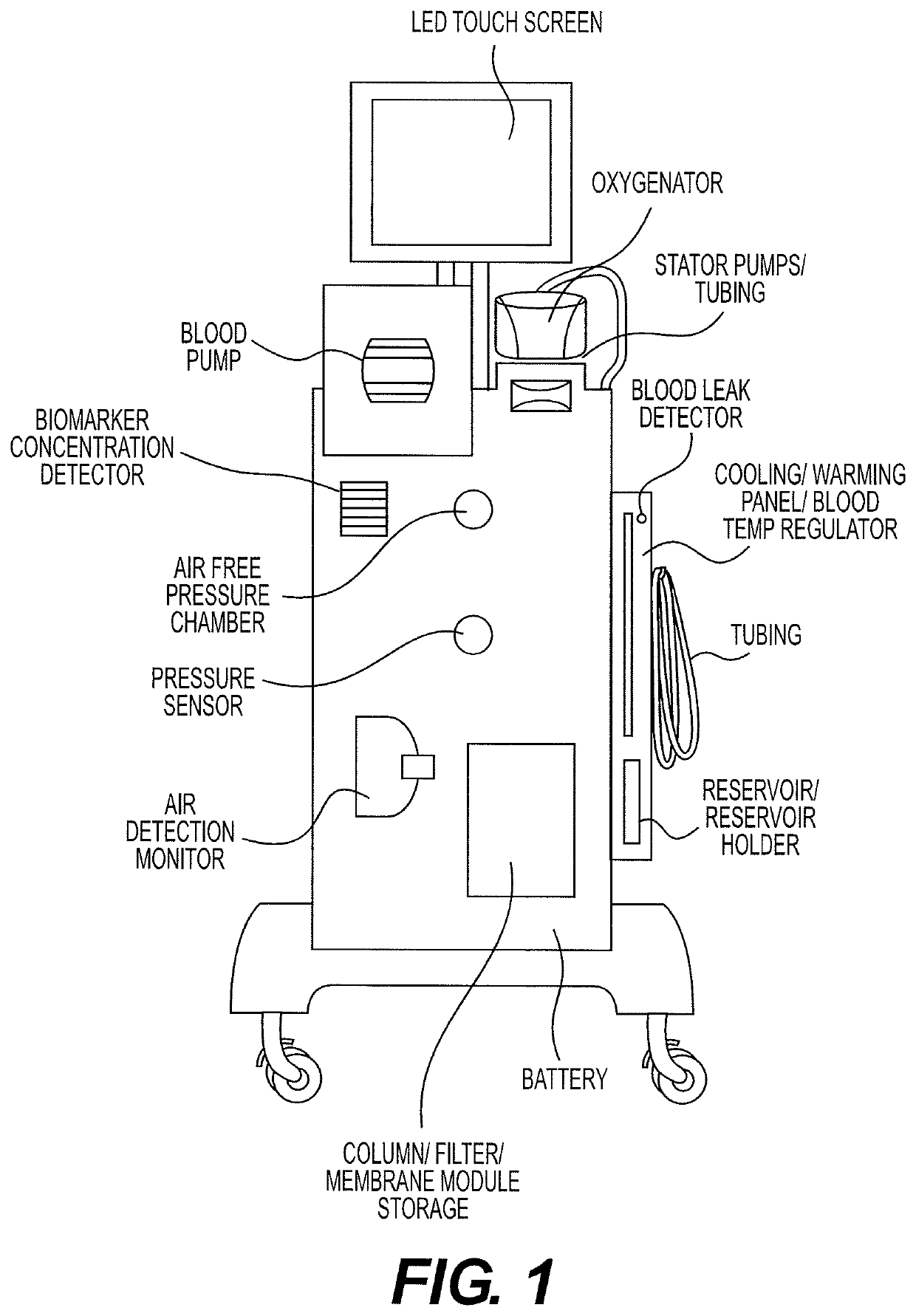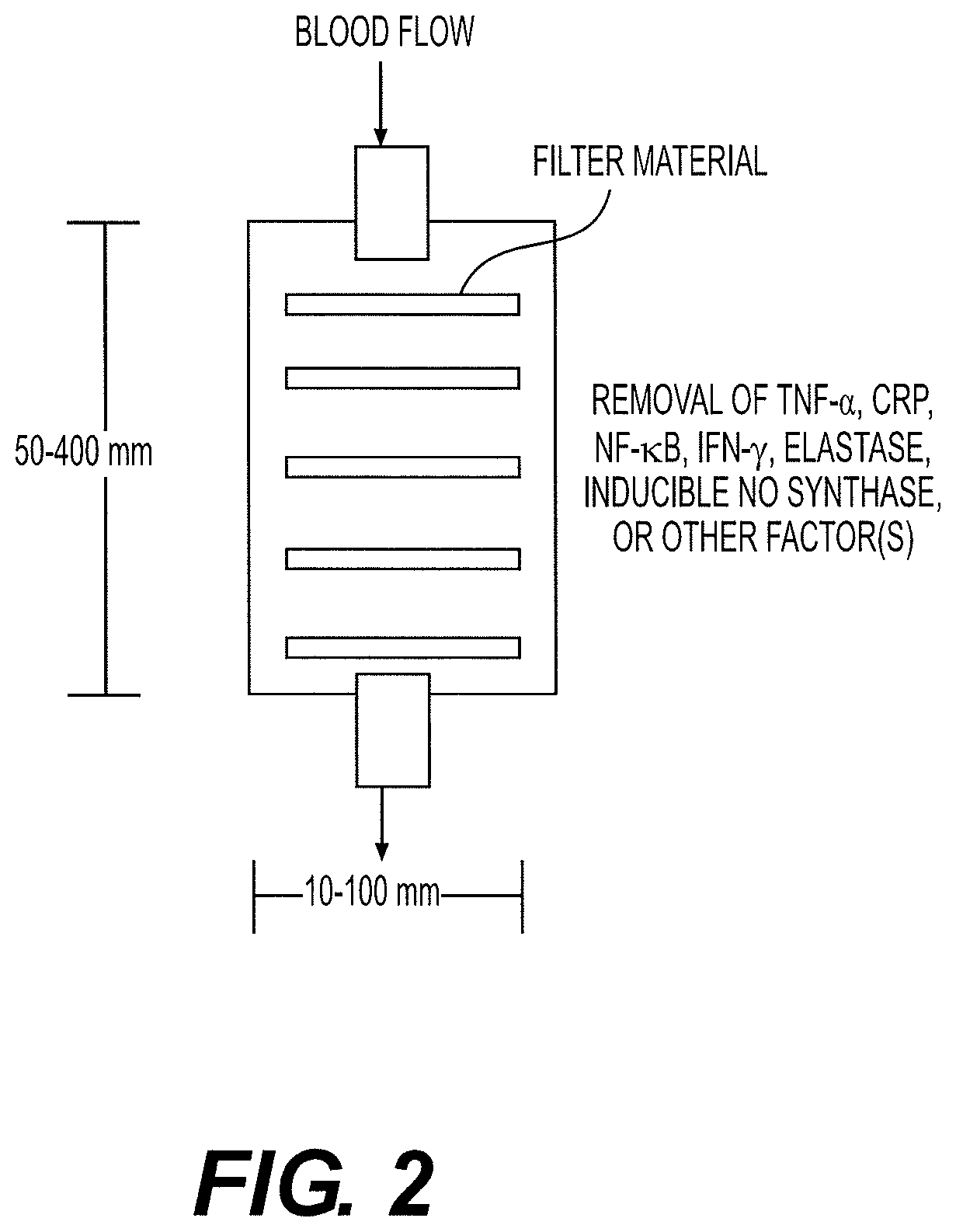Blood filtering of inflammatory biomarkers to treat post-resuscitation syndrome
a technology of inflammatory biomarkers and blood filtering, which is applied in the field of blood filtering of inflammatory biomarkers to treat post-resuscitation syndrome, can solve the problems of global hypokinesis (myocardial stunning), impaired cerebrovascular autoregulation, and/or post-ischemic neurodegeneration, and achieves effective treatment or prevention of prs, enhanced surface area, and efficient and selective removal
- Summary
- Abstract
- Description
- Claims
- Application Information
AI Technical Summary
Benefits of technology
Problems solved by technology
Method used
Image
Examples
Embodiment Construction
[0064]As used herein, the singular forms “a,”“an,” and “the” include the plural reference unless the context clearly dictates otherwise. For example, reference to “a cytokine” would also mean that mixtures of one or more cytokines can be present unless specifically excluded.
[0065]Except where otherwise indicated, all numbers expressing quantities of ingredients, reaction conditions, and so forth used in the specification and claims are to be understood as being modified in all instances by the term “about.” Accordingly, unless indicated to the contrary, the numerical parameters set forth in the specification and claims are approximations that may vary depending upon the desired properties sought to be obtained by the present invention. At the very least, and not to be considered as an attempt to limit the application of the doctrine of equivalents to the scope of the claims, each numerical parameter should be construed in light of the number of significant digits and ordinary roundi...
PUM
 Login to View More
Login to View More Abstract
Description
Claims
Application Information
 Login to View More
Login to View More - R&D
- Intellectual Property
- Life Sciences
- Materials
- Tech Scout
- Unparalleled Data Quality
- Higher Quality Content
- 60% Fewer Hallucinations
Browse by: Latest US Patents, China's latest patents, Technical Efficacy Thesaurus, Application Domain, Technology Topic, Popular Technical Reports.
© 2025 PatSnap. All rights reserved.Legal|Privacy policy|Modern Slavery Act Transparency Statement|Sitemap|About US| Contact US: help@patsnap.com



